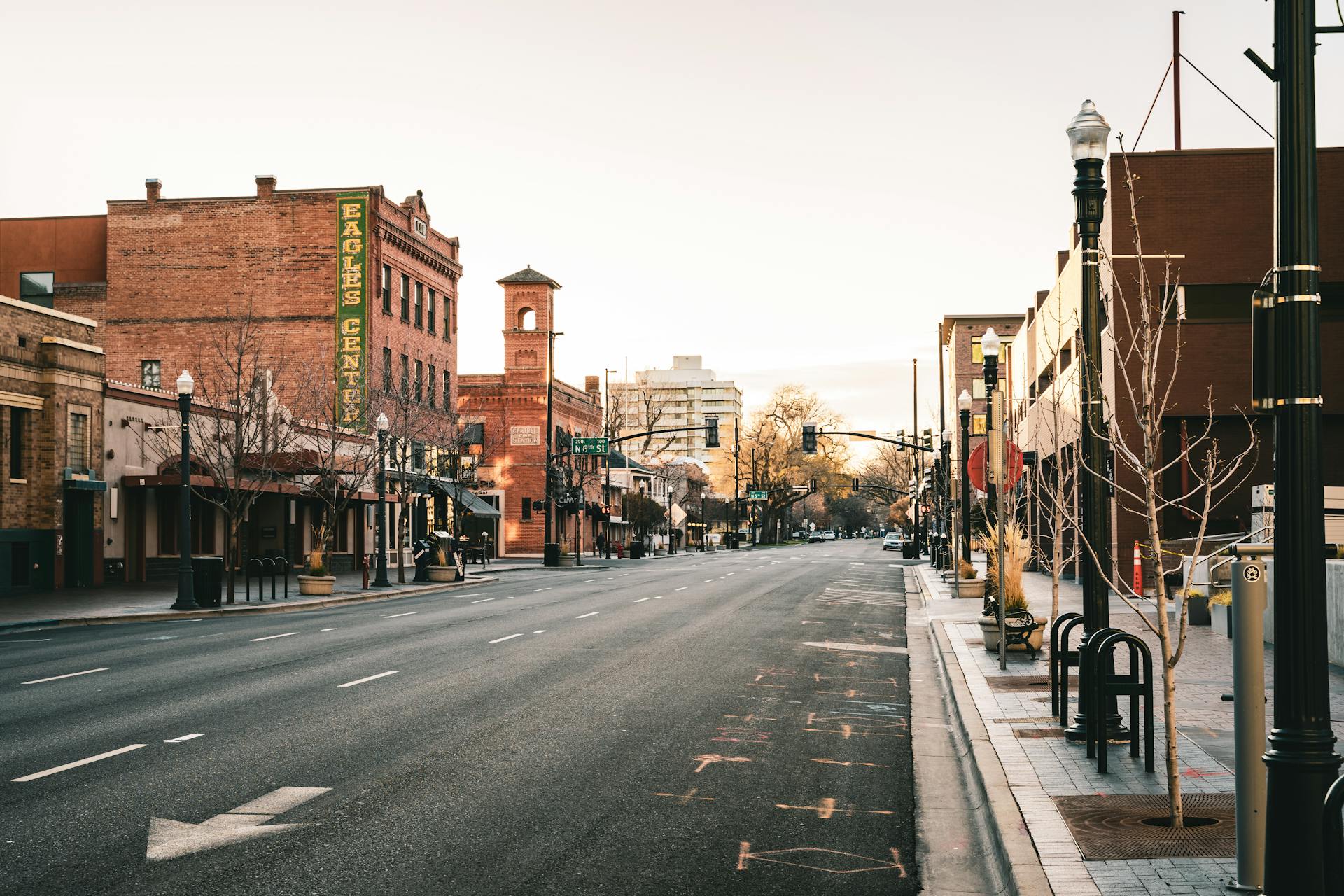The Revolutionary Approach To Community Incentives In HomeTown Markets
September 30th, 2025
6 min read
By Andy Weiner

Incentives in commercial real estate include government programs and tenant or landlord benefits that make deals more feasible and profitable. Tools such as tax increment financing, sales tax incentives, and job creation grants can lower costs, enhance returns, and help reposition underperforming properties for long-term success.
Sometimes the deal behind the deal is what really seals it.
Over decades of studying retail and shopping centers, I've learned that incentives are powerful mechanisms that reshape a project's economics, bridging gaps and creating opportunities.
As an investor, understanding the landscape of tenant and government incentives isn't just smart—it's a competitive advantage.
These financial levers can transform roadblocks into pathways for growth, providing developers with opportunities to optimize their investments and deliver value to communities.
This guide will walk you through real estate incentives, revealing how investors can leverage opportunities to drive results.
Government Incentives: Making the Numbers Work
Incentives refer to the government benefits and deductions that landlords and property owners can use to lower their taxes, fund property improvements, and more.
In real estate, incentives play a significant role in facilitating deals, contributing to the creation of successful developments. This reassures and instills confidence in your investment potential as a new investor in the commercial real estate market. Additionally, incentives can be the driving factor to push a deal from “in progress” to “completed.”
Government incentives differ significantly from landlord-provided tenant benefits. They aim to bridge the financial gap for projects where tenant rents alone can’t support the development costs.
Why Local Governments Give Incentives
There are several reasons why county and town leadership provide these funds and benefits, all relating to the economic health of their municipality. Local governments offer incentives to retail developments and redevelopment for several key reasons:
1. To Combat Market Bleed
Many towns experience "market bleed," where residents travel to neighboring cities to shop at better stores. This leads to lost sales tax revenue and a diminished local economy. Incentives help attract retailers, keeping spending—and tax dollars—within the community.
2. To Revitalize Underperforming Areas
Retail developments can breathe new life into stagnant or aging areas. A new shopping center or a high-profile retailer acts as a catalyst, increasing property values, boosting foot traffic, and encouraging further investments from other businesses.
3. Attracting Big-Name Tenants
Governments are often more willing to offer incentives to “exciting” tenants—big-name retailers like Costco or Target—because they generate excitement, bring in steady revenue, and enhance the community's reputation. These tenants often become local landmarks, drawing shoppers from surrounding areas.
4. Competing for Retailers
With multiple locations, retailers often evaluate cities based on the incentives offered. Offering incentives for smaller or tertiary markets can help them compete with larger urban centers, making their communities more attractive for investment.
5. Increasing Property and Sales Tax Revenue
Retail developments bring immediate benefits and generate long-term tax revenues. Higher property values and increased sales taxes provide ongoing financial support for public services and infrastructure.
6. Closing the Financial Gap
Incentives bridge the gap between the costs of bringing a retailer into the community and what the retailer is willing to invest. By offering financial or logistical support, cities create an environment where economic development becomes feasible for developers and tenants.
When executed correctly, these incentives create a win-win scenario: retailers gain a foothold in desirable markets, and communities reap the benefits of enhanced economic vitality and improved quality of life.
Three Main Types of Incentives
These incentives fall into several categories:
1. Tax Increment Financing (TIF)
In tax increment financing, the city reimburses the developer for the increase in property taxes generated by the project over a set period—usually over a period of 10, 15, or 20 years.
For example, if a property’s value rises from $10 million to $30 million, the additional taxes might total $400,000 annually. The city sets aside this amount each year and gives it back to the landlord, which institutional investors like RockStep Capital can use to secure better financing from lenders.
However, TIFs work best for properties with triple net leases (where tenants cover property tax increases). If tenants are on gross leases, landlords may have to absorb those costs, making TIFs less effective.
2. Sales Tax Incentives
Sales tax incentives allow developers to add a small tax, often one or two cents per sale, on transactions at their property. This refers to all purchases that customers make at any of the stores in the shopping center. The funds generated help finance improvements.
Let's use an example of a property RockStep Capital manages to explore how taxes can be used to improve properties:
At Riverwalk in New Orleans, the RockStep team wants to improve a section of the Riverwalk called Spanish Plaza, located at the banks of the Mississippi River and at the intersection of Canal Street. The improvements that our team has planned are an upgraded fountain, a permanent stage to host music events, and four brand-new restaurants.
To fund these planned improvements, the RockStep team was able to enact a sales tax incentive, adding a two-cent sales tax to all transactions done on the property of the Riverwalk. The capital generated from this tax will be able to fund the improvements of the property, which would not have been possible without this incentive.
These sales tax arrangements don’t change consumer behavior—shoppers barely notice the additional cost—and they create a steady income stream for financing.
3. Grants and Special Programs
In some cases, state agencies offer grants for specific projects. Grants like these are rare but incredibly impactful, though they often come with strings attached, like detailed paperwork or public bidding requirements.
For example, at one of our properties in Minnesota, the Iron Range Resources and Rehabilitation Board (IRRRB) provided grant money for the RockStep team on multiple occasions. These funds total over $2.3 million across various projects supporting critical elements of redevelopment.
$350,000 from these grants aided the conversion of a former Kmart into a retail hub featuring Harbor Freight, Aldi, and Tractor Supply. An additional $500,000 from the City of Virginia and $1.5 million from the IRRRB made the redevelopment of a site for Marshall’s and TJ Maxx possible. The remaining amount went into other various developments.
The IRRRB provided these grants because our projects align with their mission to stimulate economic growth and improve the quality of life in the Iron Range region. The redevelopment efforts address critical community needs by attracting national retailers, reducing the need for residents to travel long distances for shopping, and creating local job opportunities.
Additionally, the strong local connections our team brought to the table instilled confidence in our ability to deliver results.
Which Tenants Get Bigger Incentives?
However, not all tenants are treated equally in terms of government incentives.
As I often say, "The sexier the tenant, the more desirable they are to the community, the more types of incentives a government agency will provide." Big-name retailers like Target or Costco generate excitement, drive traffic, and keep local residents shopping close to home. That’s why cities are more likely to invest resources to attract them.
On the other hand, smaller and less exciting tenants fill essential gaps, providing affordable goods and services that meet community needs, especially in areas where larger retailers may not be a fit. Smaller tenants reduce the need for residents to shop in other cities, keeping spending local and improving the quality of life.
From a development perspective, these tenants contribute to the diversity and balance needed to sustain retail projects. While anchor tenants draw large crowds, smaller retailers ensure a steady stream of activity and variety for consumers. Incentives are often structured to support both types of tenants, creating a mix that makes projects financially viable.
Retail projects generally receive fewer incentives compared to industrial projects due to differing perceptions of their economic impact. Communities often prioritize manufacturing and industrial developments because these sectors create a significant number of jobs, leading to sustained economic benefits and growth. Manufacturing and industrial activities are directly linked to increased local employment opportunities, which can enhance the overall economic vitality of the area.
Lessons Learned: Maximize the Opportunities
Navigating incentives requires strategy and persistence. Each state and city is different, and the opportunities vary widely.
Most businesses don’t even know about these programs, and figuring them out means doing the research, talking to attorneys, and engaging with local experts. The key is understanding that incentives aren't one-size-fits-all. What works in Kansas might look completely different from an incentive package in Oregon. Each jurisdiction has its economic priorities, and savvy developers learn to speak that local language of economic development.
In all of these different areas, however, one specific principle needs to be followed: you need to explore every incentive opportunity to the maximum. Whether it’s TIFs, sales tax programs, or grants, the key is knowing what’s available and having a plan to use it effectively.
But here’s the catch: you can’t wait for incentives to come to you. You’ve got to dig, ask questions, and work the system—whether it’s tapping into local expertise or making sure your investing partner is sharp on navigating state and federal programs.
Investors can find details about local grants and incentive opportunities can often be found on federal websites like Grants.gov and SAM.gov. You can also narrow your search to county-specific resources, like an official municipality website.
Closing the Gap: Making Incentives Work For You
The truth is that incentives are the hidden levers that can make or break a real estate project. Whether it’s tenant improvement dollars that close the deal or a sales tax incentive that bridges the financial gap, these tools are essential for getting projects across the finish line.
For investors and operators alike, the lesson is clear: success in real estate isn’t just about location or tenants—it’s about maximizing every opportunity, and incentives are a big part of that equation. When done right, they’re not just a bonus but the foundation for building something transformative.
And at the end of the day, isn’t that the goal? We aim to create places that not only work financially but also deliver real value to the communities we’re in.
Here is my biggest piece of advice to investors regarding incentives: don’t leave money on the table. Ensure that your institutional partner is doing their part to leverage incentives, and look for them yourself, too. By staying informed on your sector, location, and industry incentives, you can rest assured that your institutional partner will not let any opportunities fall through the cracks.
Get out there, do the homework, and make these incentives work for you and your institutional investing goals. It’s not easy, but the results can be absolutely incredible when it pays off.
Andy Weiner is the CEO and Founder of RockStep Capital, a Houston-based real estate investment firm focused on shopping center developments in secondary and tertiary markets. A Stanford and University of Texas graduate, he began his career in his family’s retail business. Since 1997, he has led the acquisition or development of over 9.7 million square feet of shopping centers across 11 states without capital calls or assets returned to lenders.
Topics:


























